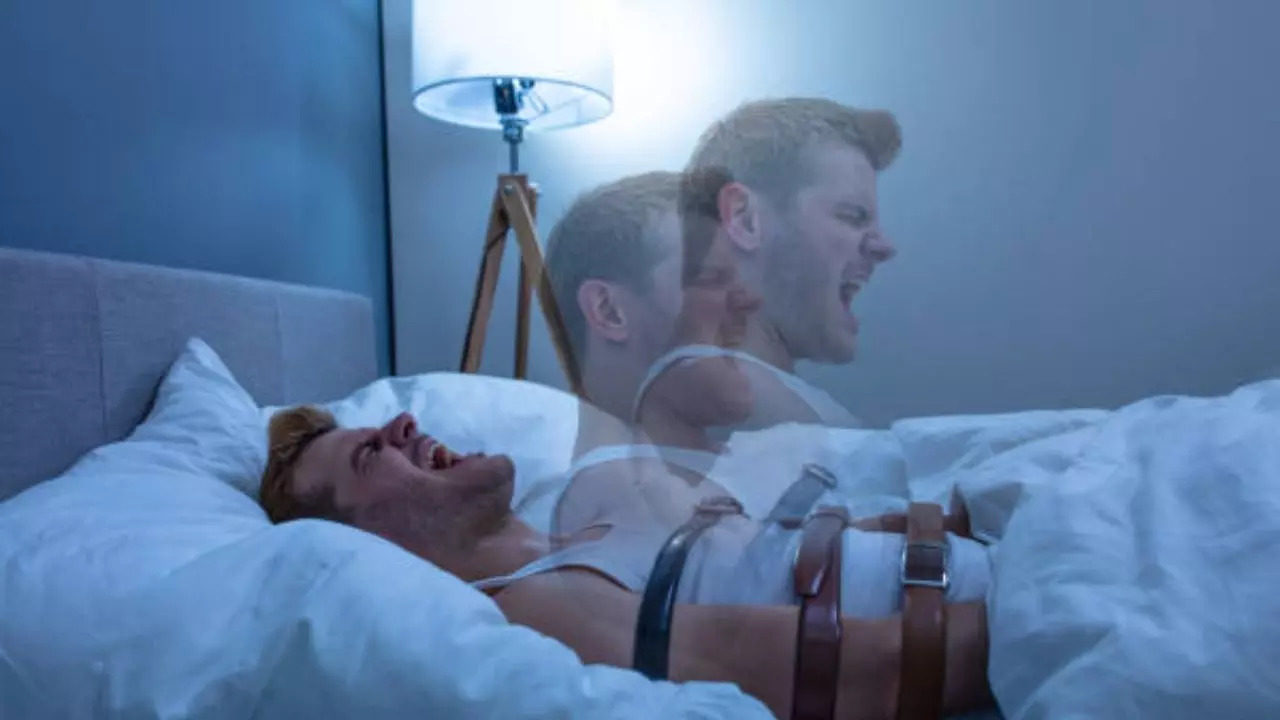What is sleep paralysis? Five effective ways to reduce the risk (Image credit: iStock)
Sleep paralysis It is a sensation that occurs when you cannot move any part of your body just before falling asleep or when you wake up. It occurs when the body is between the stages of sleep and wakefulness. Although it is temporary and lasts only a short time, it is a type of parasomnia.
You’re likely to feel fear or anxiety during an episode of sleep paralysis. When it’s over, you may feel confused because you regain movement of your body as if nothing had happened. This condition can be quite alarming, as it’s often accompanied by vivid hallucinations and a sense of impending doom. People who experience sleep paralysis are fully aware of their surroundings, but feel trapped in their own bodies, unable to call for help or move their limbs.
During sleep, our body typically enters a state of paralysis called atonia to prevent us from acting out our dreams. However, during sleep paralysis, this atonia persists even when the mind wakes up, creating a disconnect between the brain’s commands and the body’s ability to respond. While sleep paralysis is usually harmless, lasting only a few seconds or a couple of minutes, it can be a frightening experience, especially if it happens frequently.
Causes of sleep paralysis
Sleep paralysis is often linked to certain sleep disorders, such as narcolepsy, a condition that occurs due to excessive daytime sleepiness and a sudden loss of muscle control. Other contributing factors include lack of sleep, irregular sleep schedules, stressand certain medications. Some research also suggests a genetic component, indicating that sleep paralysis may be hereditary.
While sleep paralysis itself is not considered a serious medical condition, it can be a symptom of underlying sleep problems that require attention. Understanding what triggers sleep paralysis can help people take steps to minimize its occurrence.
5 Effective Ways to Reduce Your Risk of Sleep ParalysisHere we have listed five effective strategies to reduce your risk of sleep paralysis:
Maintain a consistent sleep schedule
One of the most effective ways to prevent sleep paralysis is to establish and maintain a regular sleep schedule. Going to bed and waking up at the same time every day helps regulate the body’s internal clock, reducing the chances of disrupted sleep cycles that can lead to sleep paralysis. Aim for 7 to 9 hours of sleep per night, which is the recommended amount for most adults.
Create a relaxing bedtime routine
A relaxing bedtime routine can signal to your body that it’s time to wind down and prepare for sleep. Activities such as reading, taking a warm bath, or practicing mindfulness meditation can help reduce stress and anxietywhich are common triggers for sleep paralysis. Avoid stimulating activities before bed, such as watching television or using electronic devices, as the blue light emitted by screens can interfere with the production of melatonin, a hormone that regulates sleep.
Sleep environment
The environment you sleep in plays a huge role in the quality of your rest. Make sure your bedroom is conducive to sleep by keeping it dark, quiet, and cool. Consider using blackout curtains, a white noise machine, or a fan to create a calming environment. A comfortable mattress and pillows that provide adequate support can also help improve sleep quality and reduce the likelihood of sleep paralysis.
Reduce caffeine and alcohol consumption
Caffeine and alcohol consumption, especially in the hours before bedtime, can disrupt sleep patterns and increase the risk of sleep paralysis. Caffeine is a stimulant that can interfere with the ability to fall asleep, while alcohol, despite its initial sedative effects, can lead to fragmented sleep later in the night. Try to limit caffeine consumption to early in the day and avoid alcohol in the evening to promote better sleep hygiene.
Managing stress and anxiety
Stress and anxiety are major contributing factors to sleep disorders, including sleep paralysis. Finding effective ways to manage these emotions can significantly reduce the frequency and severity of sleep paralysis episodes. Techniques such as deep breathing exercises, progressive muscle relaxation, and cognitive behavioral therapy (CBT) have been shown to help manage stress and improve sleep quality. Additionally, regular physical activity can act as a natural stress reliever and help promote better sleep.
Disclaimer:
The information contained in this post is for general information purposes only. We make no representations or warranties of any kind, express or implied, about the completeness, accuracy, reliability, suitability or availability with respect to the website or the information, products, services, or related graphics contained on the post for any purpose.
We respect the intellectual property rights of content creators. If you are the owner of any material featured on our website and have concerns about its use, please contact us. We are committed to addressing any copyright issues promptly and will remove any material within 2 days of receiving a request from the rightful owner.

